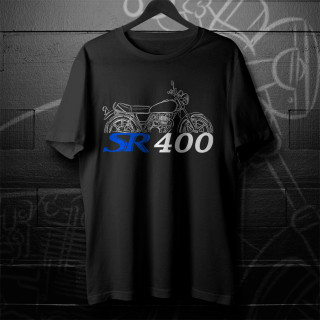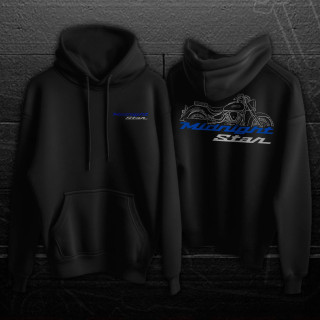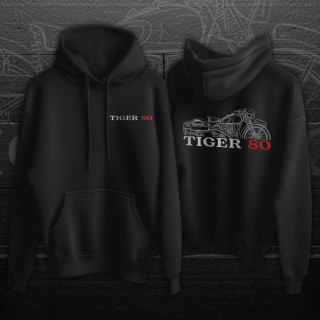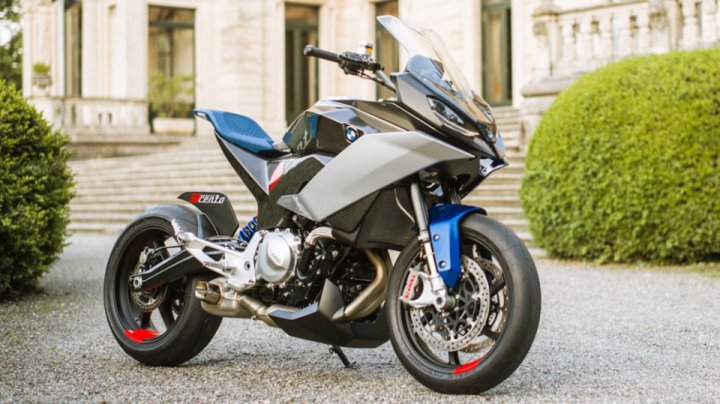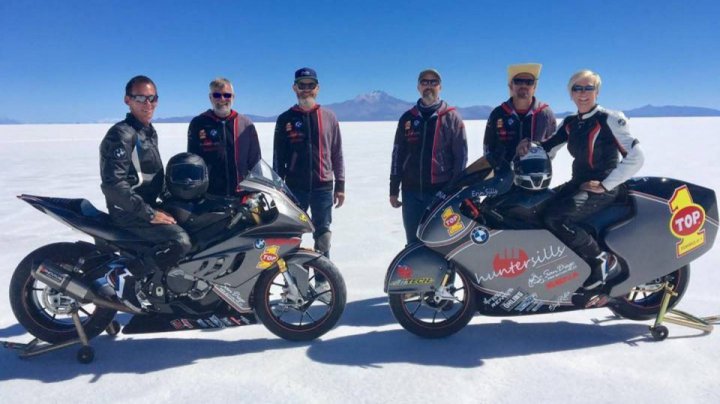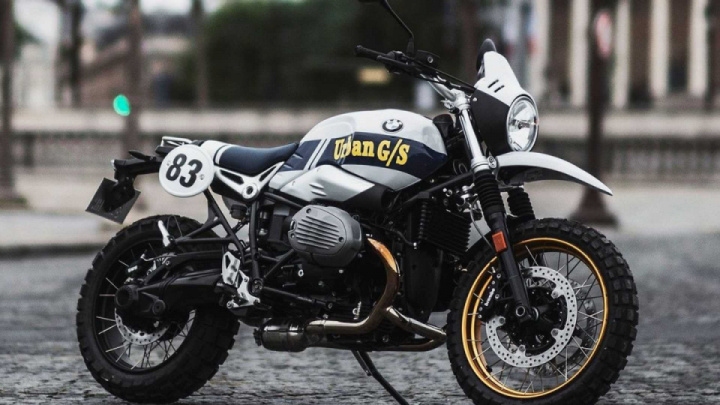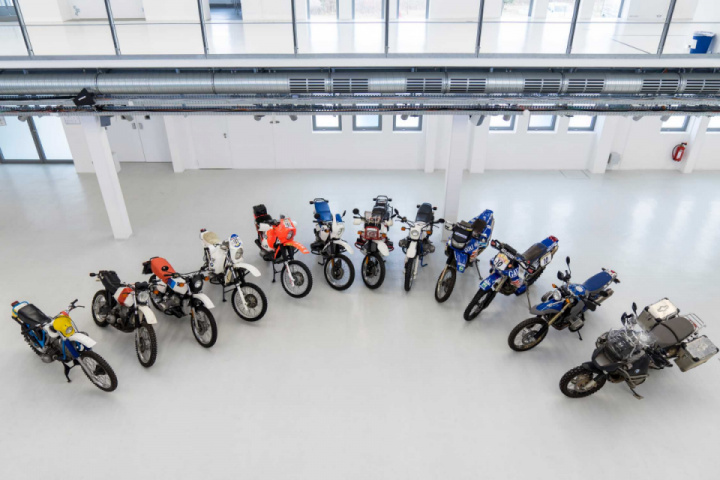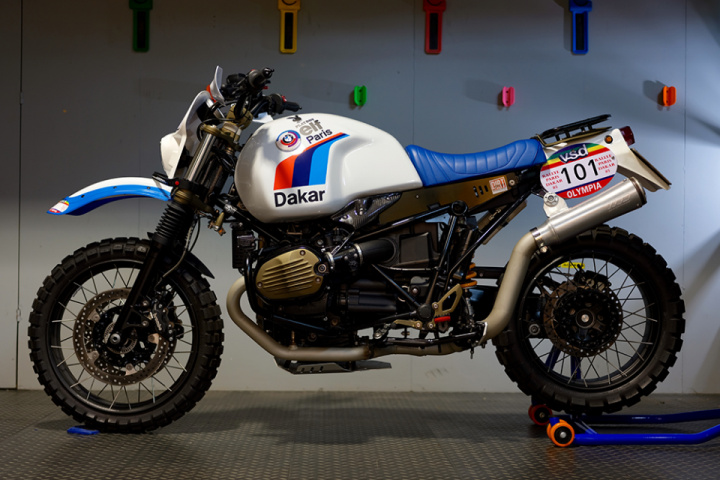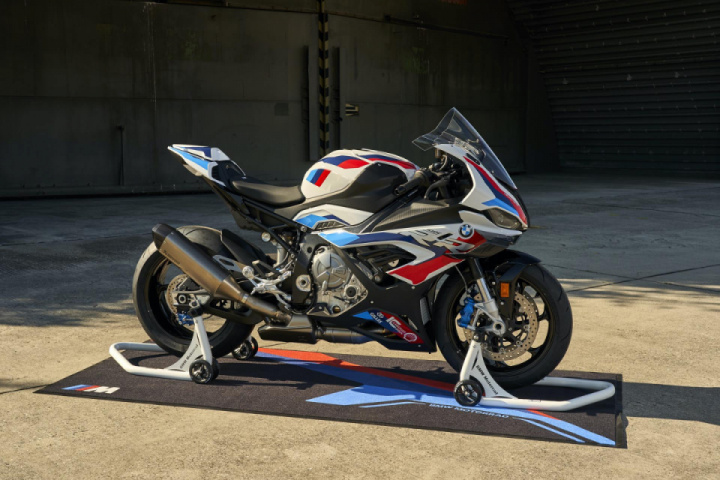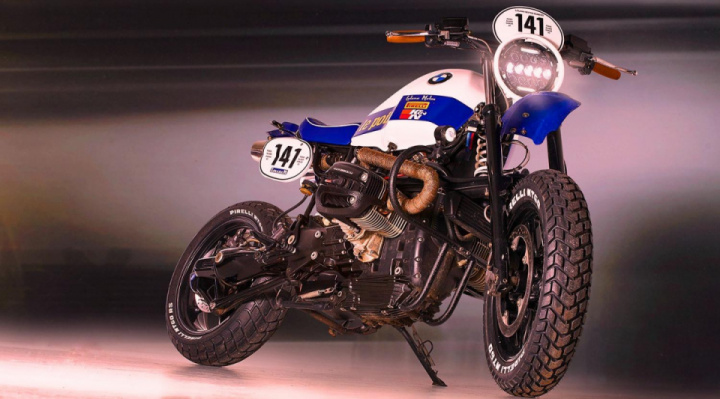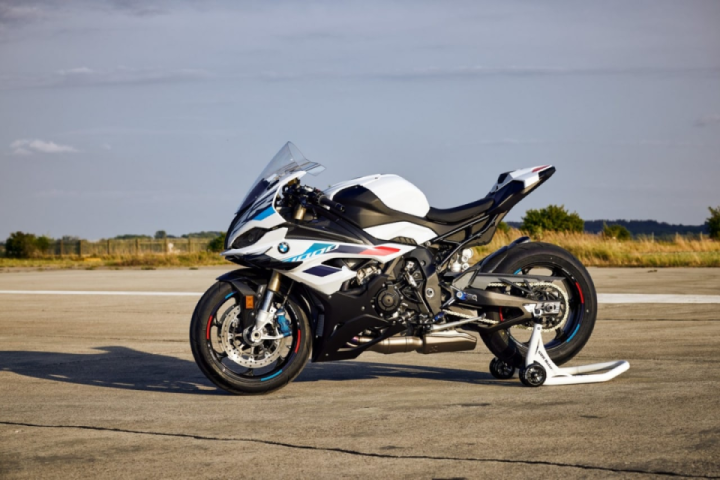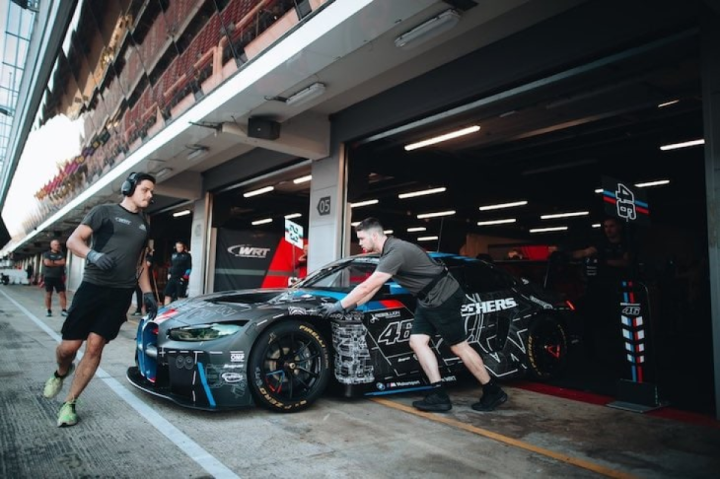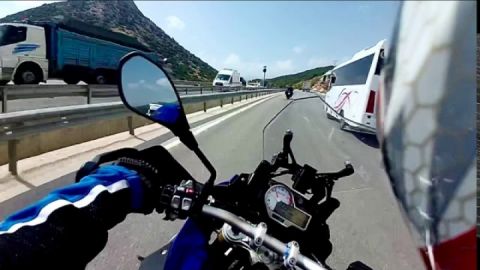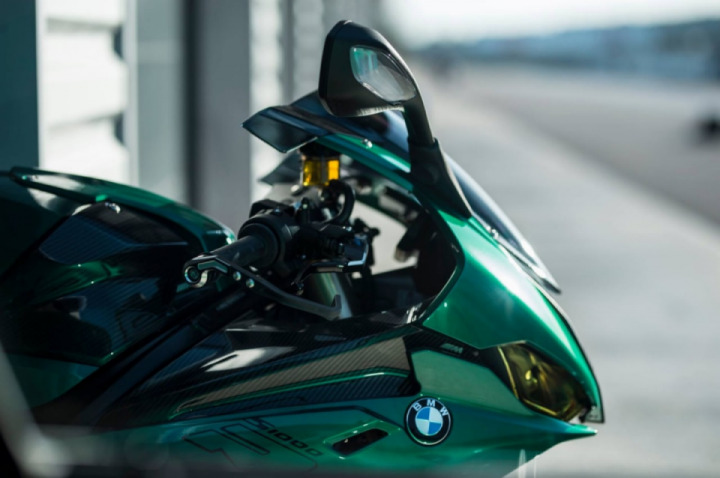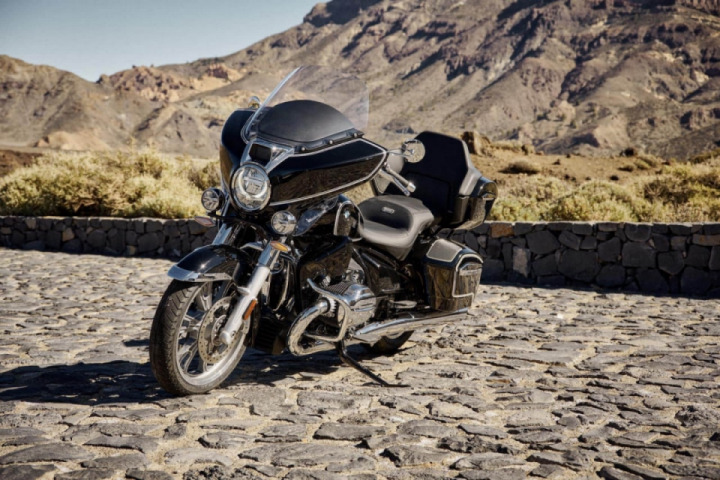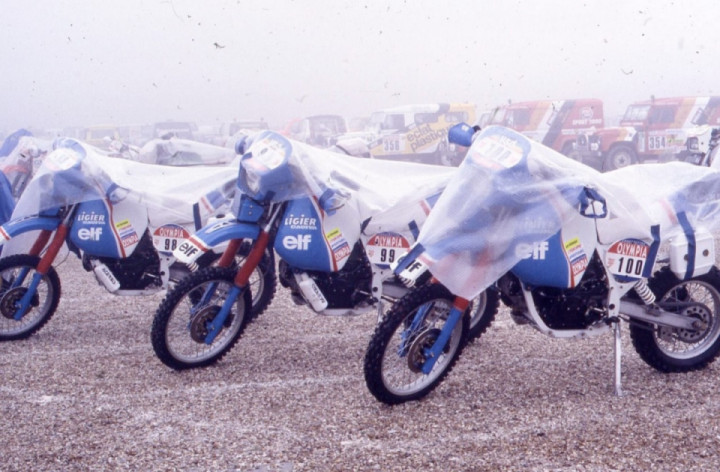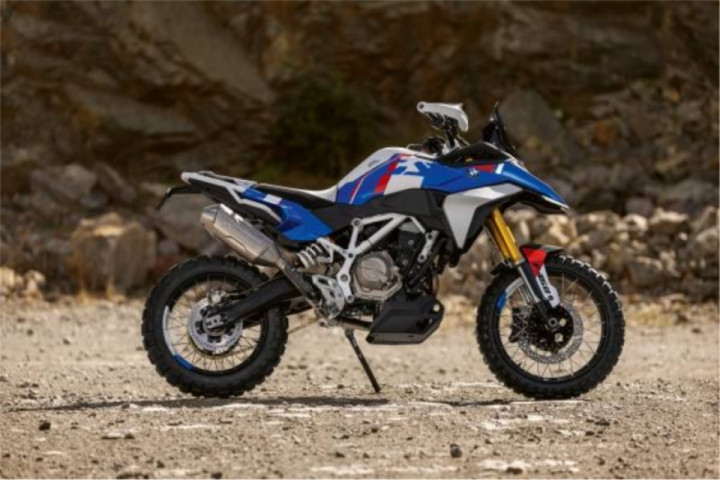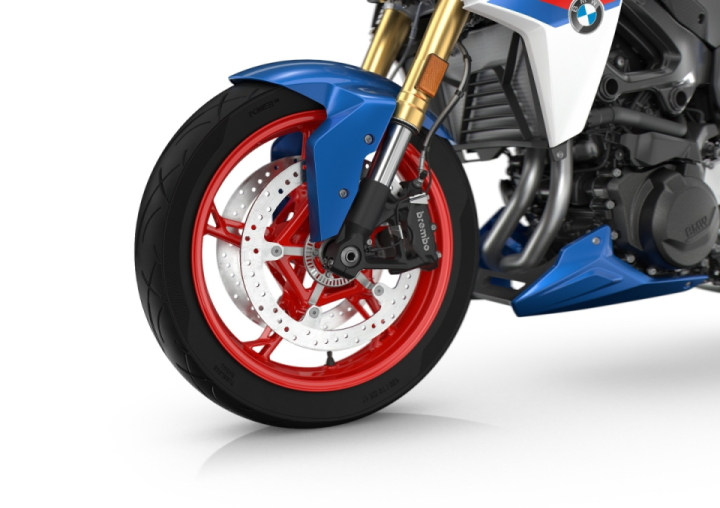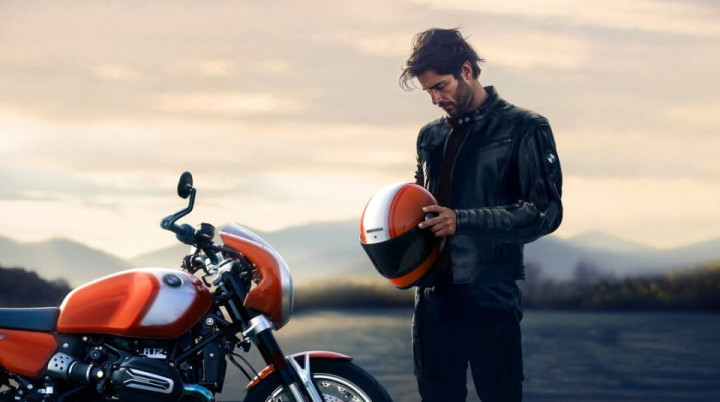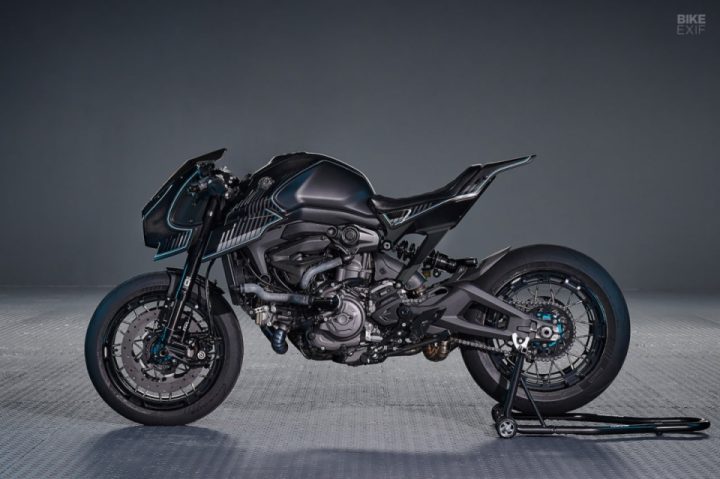
The Test of the BMW winner of the Dakar 1985
The legendary BMW, winner of four editions of the Paris Dakar (’81.’83, ’84 and 85), it's definitely for fans of this type of competition the most you can aspire to, and it is for us too, in love with motorcycles and great spaces ever since the #8217;idea of running in the Sahara was of a few bizarre enthusiasts, but already capable of beating-king the heart almost as much (if not more) a fold at 50 degrees or a new lap record. Around the G/S Paris-Dakar (or rather at Project Paris-Dakar, its official definition) a myriad of legends have flourished that speak of unheard-of powers and lack of driveability. Often, In short, l#8217.imagination has transcended and made in this "university of the off-road" an unattainable myth on which 11 profane anything or almost had to know.
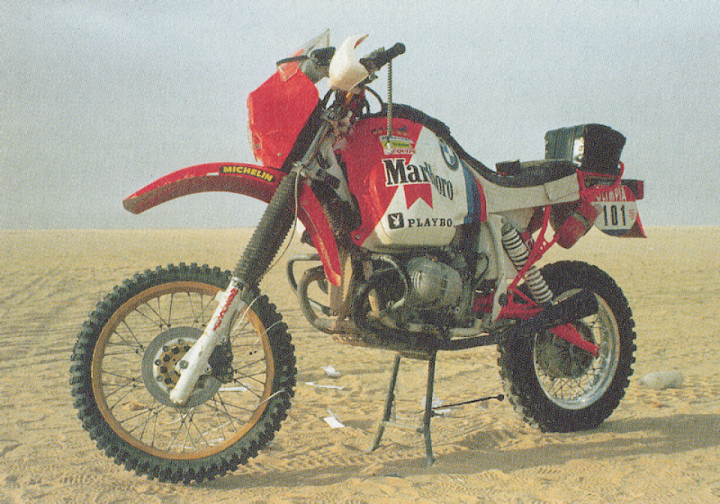
Now, Instead, thanks to the courtesy of the BMW in the people of the ’engineer Pachernegg, New, team's sporting director Dietmar Beinhauer and all’enterprise of our German collaborator Oscar Wieland, we can offer an unprecedented test of the bike that arrived first on dakar beach on 22 January. Our task has not been exhausted with the test; In fact, we have observed millimeter by millimeter "the most famous boxer in the world" in search of any secrets and special materials that people talk about to explain the reasons for its success.
The surprise was undoubtedly great: few tricks and even less secrets, G/S 1000 Number 101 you can safely take it as an example to confirm that in African races the motorcycle component is’important, but not decisive and that the victory of Gaston Rahier it's fruit, as well as the good work of those who made the bike, of the great attention placed in the smaller an-that details, in the great organization of the team captained by Beinhauer and in the incredible strength of his first guide who managed to bring to the end of the race perhaps the toughest in the world a bike definitely heavy and committed-va like the G/S 1000 through almost 14.000 kilometers.
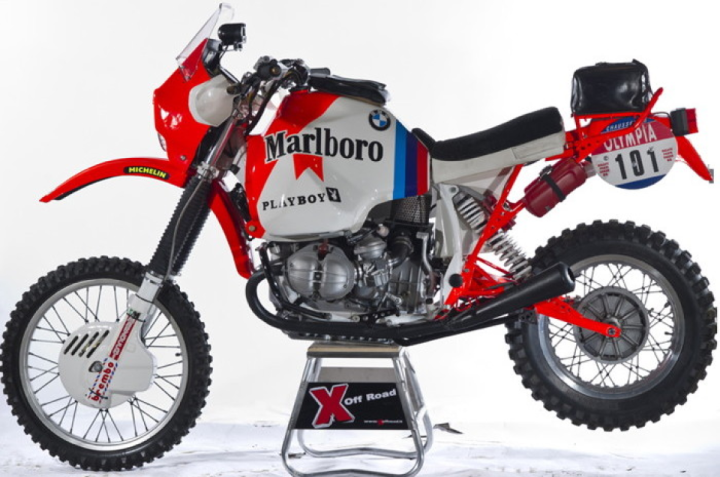
Speaking of such a famous and winning bike, you think almost automatically of a hyper sophisticated medium, complex solutions. But none of this: G/S Paris-Dakar; how the rallying school wants, a pretty conventional bike that takes advantage (in a truly brilliant cocktail) parts from the series. The engine is, basically a hybrid that takes advantage of parts of the GS 80 and R 100 RS property. The cylinders are 1000 as well as the head and carburetors. The pistons are specially made by Mahle with a shorter cape than the standard ones and with three bands, while the cylinders are standard but shorter and narrower (13,5 Mm).
Lubrication will provide about 3 litres of oil contained in the cup and cooled through a radiator placed under the steering. The filter air is automotive derivation (BMW 2002 You) and takes advantage of the same ducts on the G/S 80. The unloading takes place, very freely, through two megaphones that receive gases from two plywood pipes of the diameter of 38 mm. Electronic ignition (Bosch) with automatic ’-advance adjustment. In addition to the kick-starter there is a small motor d’start-up that uses a rechargeable dry cell battery, but, Usually, GS is started with the #8217 help of a means of #8217 (cold-engined species) or with the kick-starter after hoisting the bike on’high center stand.

The transmission-change group takes advantage of the classic five-speed and the single-disc dry clutch, but upgraded compared to the standard bike. The most important changes relate to the pipelines for the #8217;oil that have been revised to compensate for the different tilt to which the engine is forced, compared to the G/S 80 where it comes from. Very classic is also the cycling part, typically BMW, with a frame in& C-#8217;steel pipe at Cr-Mo 25 with a continuous double cradle configuration with extensive reinforcements in the area (evidently solicited) steering cannotto.
The front closely follows the structure of the GS 80 with the differences in the back of the frame that is bolted as on cross bikes to facilitate the work of the mechanics and to make it easier to repair after any falls, The rear suspension also has significant differences from the, since we find a& conventional swinging fork exploiting in the right side (where the ’transmission tree is housed) the lining mounted on the G/S 80, duly stretched to 510 mm. On the left side c’is a conventional oval section arm with sheet metal reinforcement handkerchiefs.
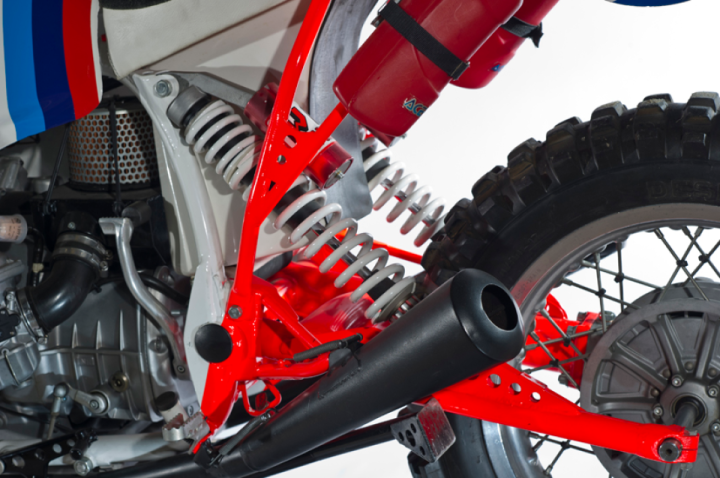
On this particular swinging fork find place two gas units of White Power cross-derived that offer a hike (remarkable for a bike with tree drive) well 280 mm. The choice of this type of suspension is mainly dictated by the great simplicity and the possibility (not always remote in these kind of races) to have to re-enter with a single shock after the failure of the ’other unit. L’front is all made in Italy with a Marchcchi tele-hydraulic fork cross-extraction with stems 41 mm. diameter and offering 300 mm. running.
The L’braking system is mixed with a Brembo disc 260 mm mounted in the front and equipped with double floating ply of charge and a BMW drum to be 200 mm rear operated by flexible cable. The circles are aluminum Akront without edging, cross-style. Moving on to superstructures and instrumentation we find an authentic "rationality manual" resulting from the great experience accumulated by the house in these years. The main tank has a capacity of 50 liters and consists of two shells of Kevlar (Smart choice made to avoid losing all fuel in the event of a tank rupture resulting from a fall) filled with a special synthetic foam with anti-shell functions that occupies only 1’1% of the tank capacity.
Under the seat, covered in suede, a second tank is located, always in kevlar, with the ability to 10 liters. Except for the tank, made in Germany by a ’specialized company, all carriage parts are due to the work of the ’Acerbis who provided fenders and peep on exclusive design. Note that the small transparent windshield of the& K 100 which is mounted to provide riders with aerodynamic cover in road or fastest track transfers. The foot controls are pretty much the same as the G/S 80, like I'm also the footpaths.
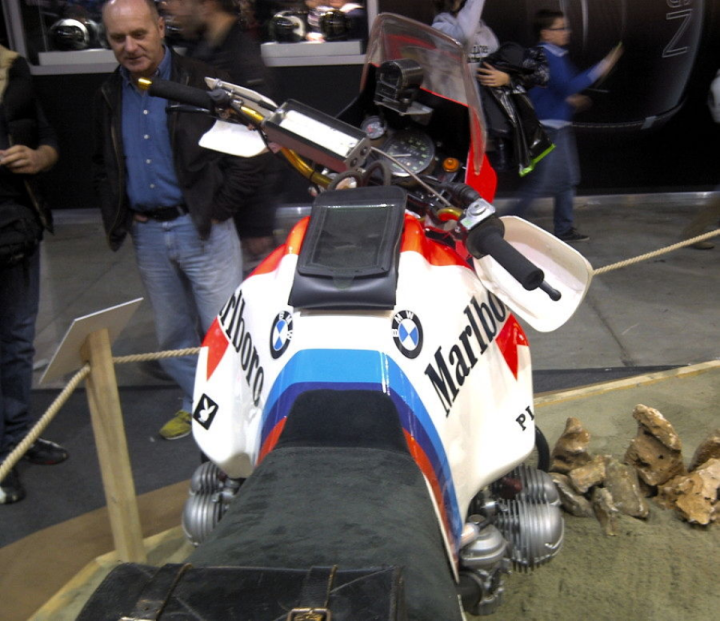
The biggest differences we find at the handlebars, a Rentahl anodized gold on which are mounted the levers and gas control of the Magura (Duo model) and a series of accessories designed specifically for the #8217;use rallyistic such as the BMW Motometer multifunction odometer and the two cans with knum where the notes of the road book flow. At the center c’is a compass of nautical derivation. The main box is on the left, on the right is a ’similar structure, smaller where Rahier reads the main notes he drafted himself. In addition to this, on’left end of the handlebars are the keys for cassette player (Walkman Sony) gaston needs to listen to Sabine's morning briefing notes in a hurry and possibly a little’ music.
Complete the dashboard control panel, l’’oil temperature indicator and pressure light in lubrication circuit. L’lighting is entrusted to a single lighthouse with a diameter of 135 mm derived from the standard one and protected by a metal grate. The tools are contained in a bag on the tank equipped with compartments (is part of the BMW accessories series), while on the back rack c’is a leather bag that contains everything you need for a Paris-Dakar; on Rahier's bike we found a pack of Elf oil, tire levers, BMW vials of air, 2 Bosch platinum candles, 2 ’air chambers, front brake pipes, Cables, tip-top in addition to the canonical canvas tape and the’inevitable iron thread. C’it is also a medicine box with anti-cooking cream, Aspirin, vitamin C com-presses. Antibiotics, saline supplements, patches of various sizes, external disinfectant, in addition to useful tablets to pob the water’water and an anti-diarrhea drug.
How are you – It's the hours 9 of a very cold Morning in March, when a number of people came out of the basement of the BMW Motorrad GMBH in Munich 520 driven by a mechanic (will assist me during the test) towing the number on a trolley 101, True Queen of ’Africa, still bearing the marks of the victorious ride. The location chosen for the test is a terrain, equipped with artificial obstacles, in the immediate vicinity of Munich where, Usually, Train the tankers of the ’German army. The cold is really pungent as evidenced by the numerous pools of #8217;water covered with a layer of ice.
The Little Mechanic (he claims to be seven centimeters shorter than Gaston Rahier) fills me with gasoline the tank in Kevlar from 10 litres placed under the saddle, sparing me the 50 litres that are normally placed in the main tank, that would raise the already high center of gravity of the bike by a lot, making it definitely difficult to drive through the gravel ups and downs of the test track. From a standstill the G/S Paris-Dakar makes really impression with its fluorescent white-orange mole dominated by the large, low-bellied tank.
Speaking of size one can only assess the grit and courage of Gaston who runs (and wins) riding a motorcycle that goes just abundant to me that I'm taller than him about 20 cm (support on the ground both feet with outstretched legs) and weighing with the two tanks full and in race setup 228 kg. L’start-up, cold-engined, is done by connecting to the car's engine, moments and the #8217 icy air of the field resonant echoes of the din coming out of the ominous trombones of the G/S. Despite the 14.000 kilometres have left some marks on the bodywork and that rust due to the ’water of the ’Atlantic, the bike is in pretty much the same condition as it came to Dakar: only a normal check was done to electrical details, in addition to a change of ’oil and filter.
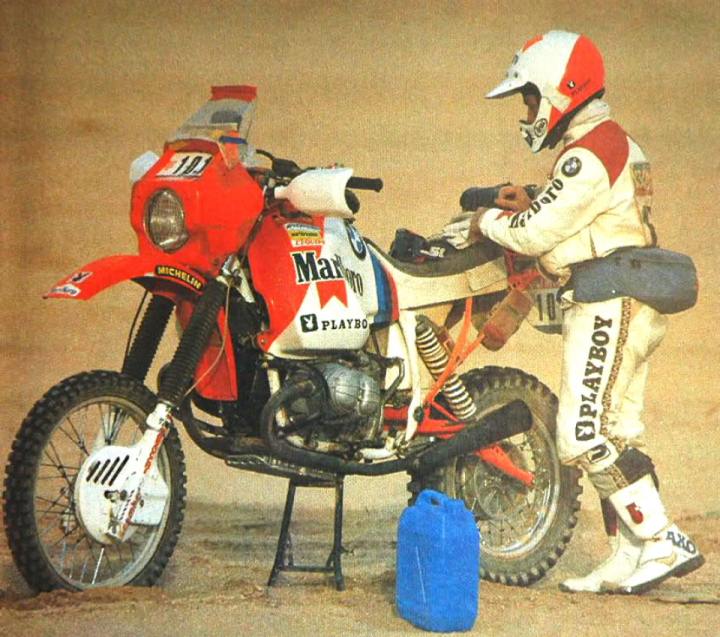
Silence again, the boxer is silent: I want to try the ’standard start, the pedal one, to better understand what Rahier used to do every day. You start by putting the G/S on the center stand (really difficult feat that sees success only after a d’team done by two people), then you place your left foot on the bumper hose, while with the right he kicks himself on the lever winning the resistance of the two large pistons and at the same time to-take a wire the valves of the carbutors, rotating the Magura Duo in aluminum. A few rides and the engine starts, but it's certainly not an easy’enterprise and requires some mastery. Needless to say, the mind immediately runs to Gaston trying, on the sand, to start the G/S with a temperature of 35 degrees, after a fall.
The G/S engine 1000 Paris-Dakar, right, takes advantage of standard parts derived from G/S 80, like the motor carter, on which cylinders are mounted, heads and carburetors 1000 road and have traveled more than 500 miles of track! The position in the saddle is perfect, very rational, without having your legs in an unnatural position (that is, too open) despite the’tank footprint. I was afraid the foot controls would be adjusted for Rahier's boots, but that's not the case.: everything seems tailored to larger riders as they are, For example,, his companions Hau and Loiseax.
So it's great for me too, with only legs a little’ too flexed due to the reduced padding of the saddle of the number 101 compared to the other two G/Ss entrusted to the French and The German. It only takes less than 2000 quick start laps, and with good agility, once the soft clutch is released. In fact, as soon as it's moving the pounds disappear-no, as is normal on a bike with reasonably concentrated weights at the bottom, but there is still something to take with due caution, especially in the first moments.
I find this on a dirt road, quite similar to the slopes (Best) meeting in Africa. A quick glance, the road is clear, more than enough space, nothing better, then, to unleash all the horses of the Bavarian boxer. Second, third and fourth open gas; practice-mind flies clutching in your hands with force, but without apprehension, the handlebars and enjoying the speed, definitely higher than 130 per hour, with the certainty of great directionality and precision of the ’front. I'm almost going to give up the tension that had accompanied me in the first few meters of the test thinking about how easy it is to drive an off-road like this when, maybe left by the tanks of the German army, I see before me a series of hollows in very rapid succession.
There's no time to slow down, I hold on to the handlebars to contain the effects of that encounter. In an instant the rear is starting to jump and I find myself at more than a hundred an hour riding an enraged bull. When, almost miraculously, I can get over this moment unresotating I think again (and always with greater admiration) Gaston and his, daily miracles on the African slopes. I also look for the personal satisfaction of some surge, but on the heavy ground the rear wheel also sled for the truly elephanty shot of the engine. When the Michelin Desert decides to take it all the more, the front end rises so imperiously that I violently slam the helmet chin against the road-book and compass.
Taken from the KO I understand, At last, that a bike of such weight and power must be conducted in off-road gently taking advantage of the engine pull and its perfect delivery to all règimi without looking for solutions of strength. In doing so, you discover the great qualities of the G/S that you drive away from the limit reveals an ease of driving and a sweetness really unsuspected in such a "monster". Suspensions work very well, with great homogeneity especially, and you can go through absorbing many obstacles, maybe in the second or third with an exciting presence of horses even at the lowest règimi and keeping the high gears inserted.
Using the gas command consistently, even low-speed manoeuvres are easy, but you have to be careful not to lose the dynamism completely at the risk of finding yourself in a curve, maybe in counter-presidency with 200 kilos lying on the ground. He also jumped with the G/S, and safe, he was surprised by the naturalness with which his bulk dives into downhill jumps, always landing according to the wishes of the pilot who has nothing but to balance with little effort the medium almost a 125. I immediately think of the comparison with the then debutante Cagiva Elefant that I tried on Agadir beach at the conclusion of the Rally de l'Atlas.
After an hour of testing, the G/S literally "entered our blood" and even the reverential fear disappeared completely, So we appreciate the excellent skills of the clutch and the gearbox (with the exception of a tendency to vent between first and second) and the positive work of brakes and suspensions that must undoubtedly work hard because of the weight. In this regard all our congratulations go to Marzocchi and Brembo who have realized, the fork and the front brake respectively. At the end of the test, we try again with greater confidence, the cunettes and the steps that only an hour earlier had put me in trouble: everything better now, and the fun begins, the pure one that makes you forget about hunger and cold and those who wait for you with patience now for two hours with a temperature always stopped at zero degrees centigrade. I find another flat stretch and try to unleash all the power, but space, Germany, for this bike is little: it really takes the Sahara.
Sourse: parisdakar
#BMW #Dakar #Rally #Bike #Moto



